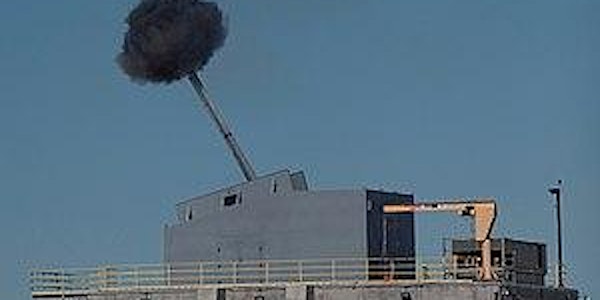


Ticket sales have ended
Please contact the Professional Education Short Course Team directly on: 02 5114 5573, or email: profedcourses@adfa.edu.au
Advanced Gun Systems
This course provides participants with an in-depth understanding of firepower technologies, equipment and systems used with guns.
Date and time
Location
UNSW Canberra City Campus
37 Constitution Avenue CIT J Block Reid, ACT 2600 AustraliaRefund Policy
About this event
Area of Interest: Lethality and Survivability
Course Summary
This online course provides participants with an in-depth understanding of firepower technologies (i.e., gun systems) in the way they work and an overview of the equipment and systems that are used in, and with guns. The course will begin with an overview of gun technologies and then introduce participants to the way guns work. The course then covers aspects of recoil, installation and ammunition concepts as well as gun manufacture.
This full course comprises of 9 modules each of which correspond to approximately 3 hours of directed learning activity.
Course Content
- MODULE 1: Overview of guns
Introduction to concepts | How guns work | Types and calibres of guns (large and small) | An introduction to ammunition types used in guns | Introduction to small arms weapon systems, towed guns, self-propelled howitzers, tank guns (cannons) and naval guns.
MODULE 2: Platform integration
Gun location in a turret | Recoil constraints and balance | Autoloaders | An introduction to recoil | Muzzle brakes | Fume extractors | An introduction to potential gun problems | An introduction to breech concepts
MODULE 3: Manufacturing fundamentals
Basic concepts in materials science | The structure of materials | Elasticity and strength | Mechanical testing | Thermal expansion | Processing of steels | Effect of cooling rates on heated steels | When barrels break | Barrel stresses | Manufacturing processes | Autofrettage | Proofing approaches | Proof pressures | An introduction to instrumentation
MODULE 4: Ballistics 1: Internal and intermediate
Introductory concepts | Piobert’s law | Effect of specific surface area on burning rates of propellants | Types of propellants: single base, double base, triple base | Barrel life (corrosion, abrasion, erosion) | Propellant-air interactions
MODULE 5: Ballistics 2: Exterior and terminal
Forces on a projectile / fragment in flight | Coefficient of drag | Projectile stabilisation techniques | Coriolis effect | Magnus effect | Penetration mechanics | Introduction to stress wave theory
MODULE 6: Basic gun calculations
Calculation of barrel droop | Thick-wall pressure vessel theory | Pressure calculations | Projectile velocity calculations | The need for a recoil system | The role of the buffer and recuperator | Examples of recoil systems | Basic recoil calculations
MODULE 7: Alternative launch technologies
Cased telescopic ammunition | Segmented penetrators | Rail guns | Coil guns | Electro-thermal technologies | Light-gas guns | More on terminal ballistics with a focus on higher velocities
MODULE 8: Gun-fired projectile concepts
Types of ammunition | Penetrator materials | Fragmenting munition concepts | Mott’s fragmentation theory | Gurney theory | High-Explosive Squash-Head
MODULE 9: Fuzes and explosives
Types of fuze | Operation | Explosive types | The explosive train | Models showing the effect of explosions | Explosives in ammunition
Tutorials
Sessions will be provided throughout the course so that the student can work through some of the issues raised under the guidance of the course presenter.
Course Learning Outcomes
At the end of this course, the student will be able to:
LO1: Explain in detail the principles of gun design and operation with respect to the materials used in construction.
LO2: Present calculations on recoil, gun droop, anticipated projectile velocities, fragment velocities and stress wave propagation and reflection.
LO3: Articulate the physics of gun operation and firing.
LO4: Describe alternative projectile launch possibilities.
LO5: Describe the issues associated with gun manufacture.
LO6: Explain the differences in penetration mechanisms for high-velocity projectiles compared to low-velocity projectiles.
Who should attend
This course is a technical course and is aimed at anyone requiring an advanced understanding of firepower technologies including (and not limited to): design engineers; material scientists; systems engineers; serving officers; and end-users. A technical background or qualification is highly recommended to get the most out of this course.
Prerequisite: A technical background or qualification is highly recommended to get the most out of this course.
In rare circumstances, the Professional Education office may need to contact you to verify your identity for participation in the courses.
Instructors
Professor Paul Hazell: Paul has over 25 years of experience studying the impact behaviour of materials. In 2012 he moved to Canberra, Australia from the UK to take up the post of Professor of Impact Dynamics at UNSW Canberra. Before taking this position he was Head of the Centre for Ordnance Science and Technology at Cranfield University’s Shrivenham campus (at the UK Defence Academy). He has published extensively, appeared in several documentaries and presented his research work at numerous symposia. He has published two books on protection technologies with the most recent called ‘ARMOUR: Materials, Theory, and Design’ (2022, CRC Press).